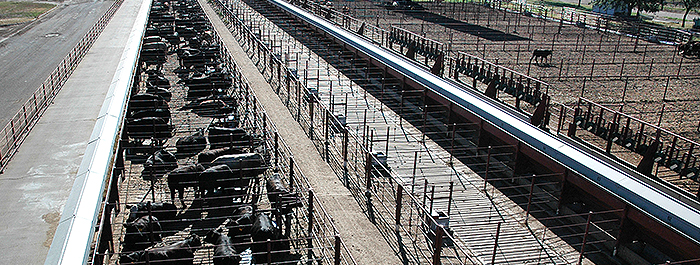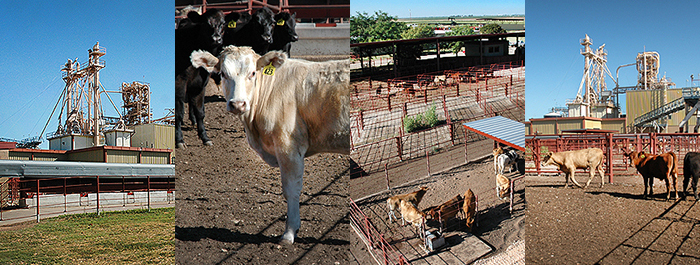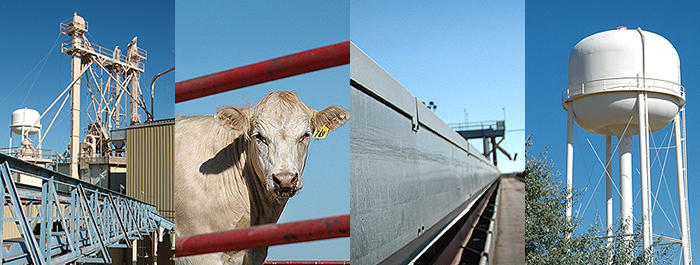Burnett Center

The Burnett Center for Beef Cattle Research & Instruction in Texas Tech University's College of Agricultural Sciences and Natural Resources is an important resource to Texas' feedlot industry and provides significant educational benefits to students in Tech's Department of Animal and Food Sciences. The facility is located at 15 miles north of Lubbock and six miles east of the small farming community of New Deal. Built primarily through the generosity of private gifts and supplemented by ad valorem taxes, it represents a significant investment by Texas Tech and Texas citizens into the state's economically important feedlot industry.
It was completed in 1984. Officials note that significant educational benefits have been realized from center, largely as a result of opportunities for undergraduate and graduate students to observe and be involved in ongoing research. Major research areas have included factors affecting animal growth and carcass composition; Evaluation of nutrient requirements of beef cattle; and grain and roughage processing. Future efforts include additional emphasis on feeding management systems to improve efficiency and sustainability (economic and environmental) of cattle production and nutrition/health interactions in lightweight, stressed beef cattle.
Advanced Feed Mill

The center features a computer-controlled feed mill and state-of-the-art experimental cattle feedlot. The feed mill complex consists of two adjoining primary buildings. The first was constructed in 1976 and was designed to facilitate the production of completely mixed, all-concentrated diets. Next, a three-level, computer-operated, dust controlled, mixing plant was completed in 1984. It's a fully automated premix and batch-mixing facility that serves the research feedlot.
It was designed to give maximum flexibility in the number of different diet formulations that could be produced in any one-time period. The two buildings have separate inside storage, premix, and bath-mixing capabilities but depend on common grain receiving, grain processing, liquid storage and weighing, and pelleting systems. The feed mill complex was designed to achieve high accuracy and precision in weighing, ingredient and feed handling and processing, premixing, mixing, and delivery of diets, and to accommodate class instruction and individual hands-on training.
Feedlot Design

Meanwhile, the center's feedlot was designed to maximize experimental flexibility, give proper control, and provide sufficient replication. The facility has 114 pens with a capacity of four to eight animals per pen. Pen floors are partially slotted concrete. Ten conventional, dirt-floor pens with a capacity of 16 animals per pen are located adjacent to the slotted-floor pens. In addition, four dirt-floor pens located next to these 10 pens are equipped with Calan headgates to allow individual feeding of up to 48 animals.
Cattle in the slotted floor pens are fed daily, either directly from the feed mill via an automated, belt-feeder system or through the use of a batch-based system, with delivery of feed to pens via a tractor-pulled, 1-ton capacity rotomix mixer. Accurate weights of feed ingredients and micro-ingredients mixed in diets are obtained and electronically recorded from stationary scales in the feed mill or on the self-propelled mixer.
CONTACT: Michael Orth, chairman, Department of Animal and Food Sciences, Texas Tech University at (806) 742-2805 or michael.orth@ttu.edu
Davis College of Agricultural Sciences & Natural Resources
-
Address
P.O. Box 42123, Lubbock, Texas 79409-2123, Dean’s Office Location: Goddard Building, Room 108 -
Phone
(806)742-2808
